百度人脸识别
1.申请百度人脸识别应用
首先需要在百度智能云平台登录
https://console.bce.baidu.com/ai/?_=1558444274128&fromai=1#/ai/face/overview/index
登陆后创建应用,创建的应用是人脸识别的,默认已帮你勾选上了相关功能。
创建应用后,点击管理应用,你就可以获取API Key和Secret Key
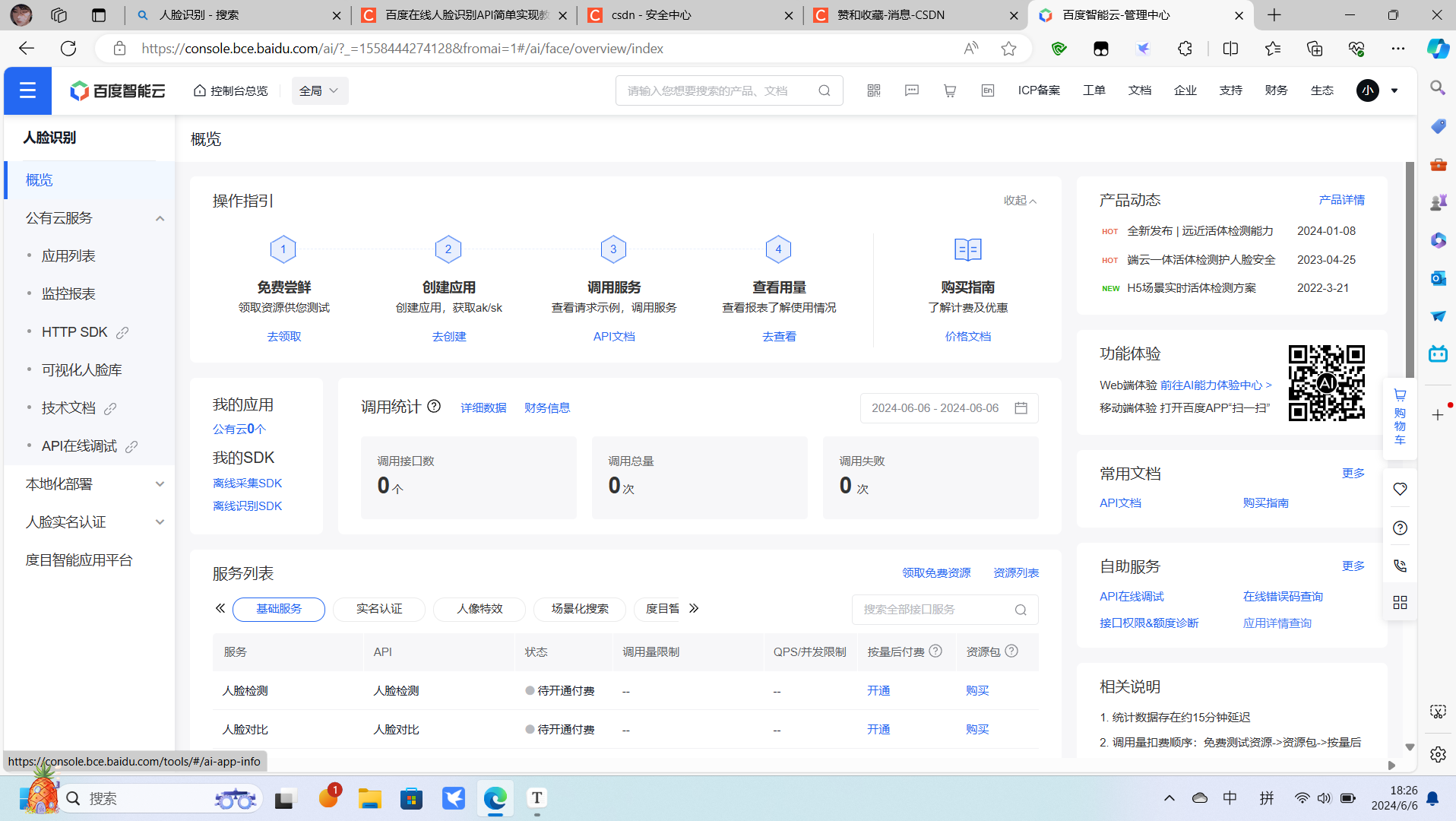
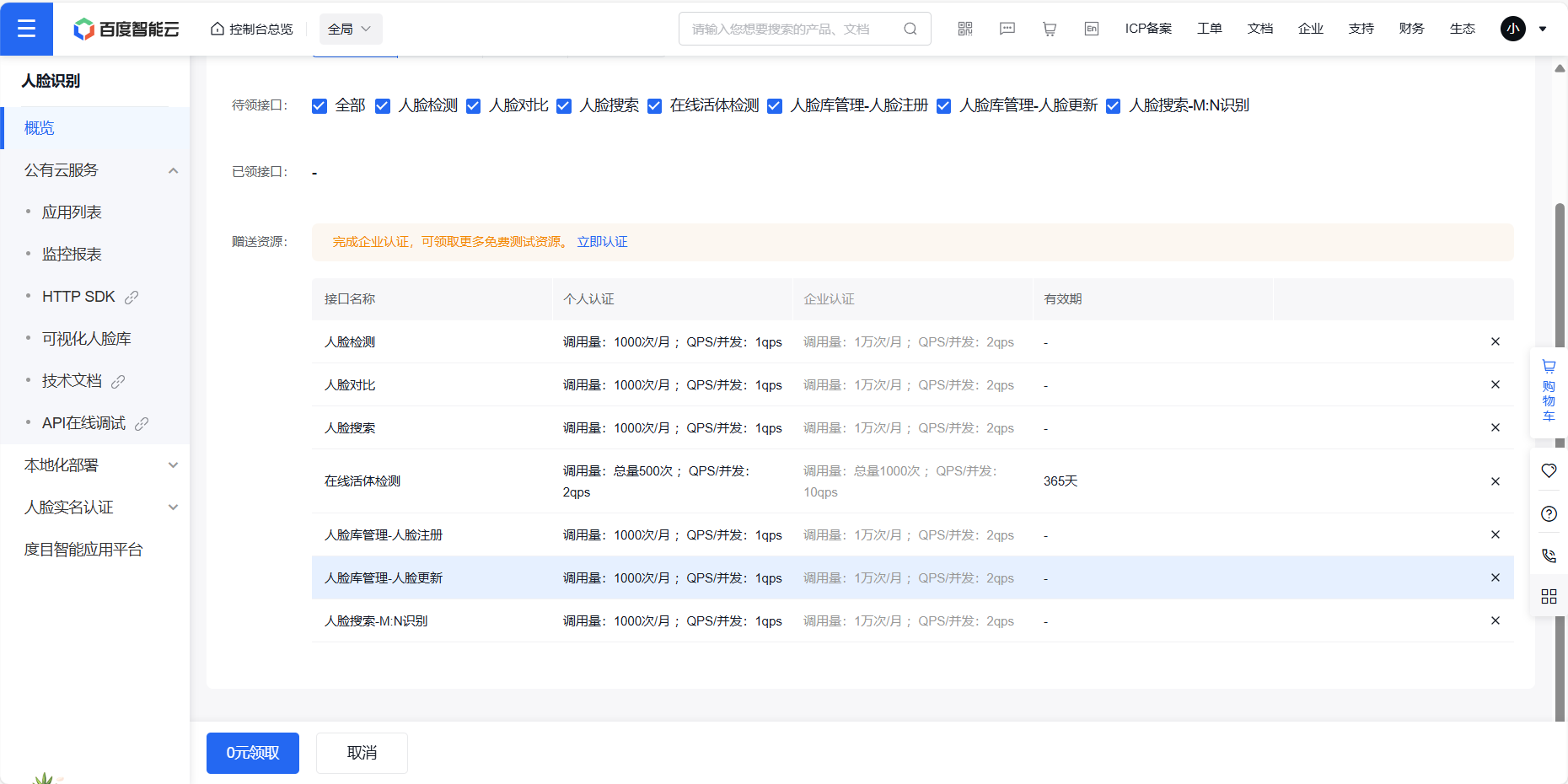
2.获取token
现在就可以编写代码调用在线的人脸检测API了
首先是获取token,用于校验,代码如下,注意换成自己申请的API Key和Secret Key
def getToken():
global token
# client_id 为官网获取的AK, client_secret 为官网获取的SK
host = 'https://aip.baidubce.com/oauth/2.0/token?grant_type=client_credentials&client_id=你的API Key&client_secret=你的Secret Key'
request = urllib2.Request(host)
request.add_header('Content-Type', 'application/json; charset=UTF-8')
response = urllib2.urlopen(request)
content = response.read()
if (content):
token=json.loads(content)['access_token']
3.图片的base64编码
上传的用于检测的图片需经过Base64编码。需要注意的是,图片的base64编码是不包含图片头的,代码如下:
def imgToBase64(imgPath):
with open(imgPath, "rb") as f: # 转为二进制格式
base64_data = base64.b64encode(f.read()) # 使用base64进行加密
return base64_data
4.人脸识别
最后就是调用接口进行人脸识别了
def faceDetect(imgBase64):
'''
人脸检测与属性分析
'''
request_url = "https://aip.baidubce.com/rest/2.0/face/v3/detect"
request_url = request_url + "?access_token=" + token
request = urllib2.Request(request_url)
request.add_header('Content-Type', 'application/json')
data = {"image": imgBase64, "image_type": "BASE64","face_field":"age,beauty,expression,face_shape,gender"}
response = urllib2.urlopen(request, urllib.urlencode(data))
content = response.read()
if content:
return content
这个函数中输入的是图片的base64编码,请求的参数中比较重要的是那个face_field,默认只返回人脸框的位置、概率和旋转角度,age(年龄预测),beauty(颜值打分),expression(表情)等更多属性,需要在这个参数中添加,具体的请参考官方说明文档:http://ai.baidu.com/docs#/Face-Detect-V3/top
5.结果绘制与可视化
人脸识别最后返回的是json数据,但我们往往需要画个框框,把人脸框出来,同时把一些预测的属性也标注上,这个代码我已经附在最后面了。
最终实现的效果如下:
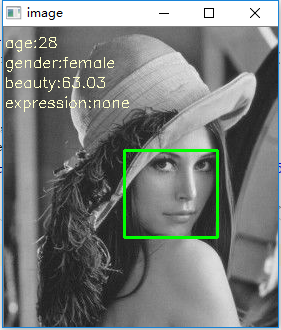
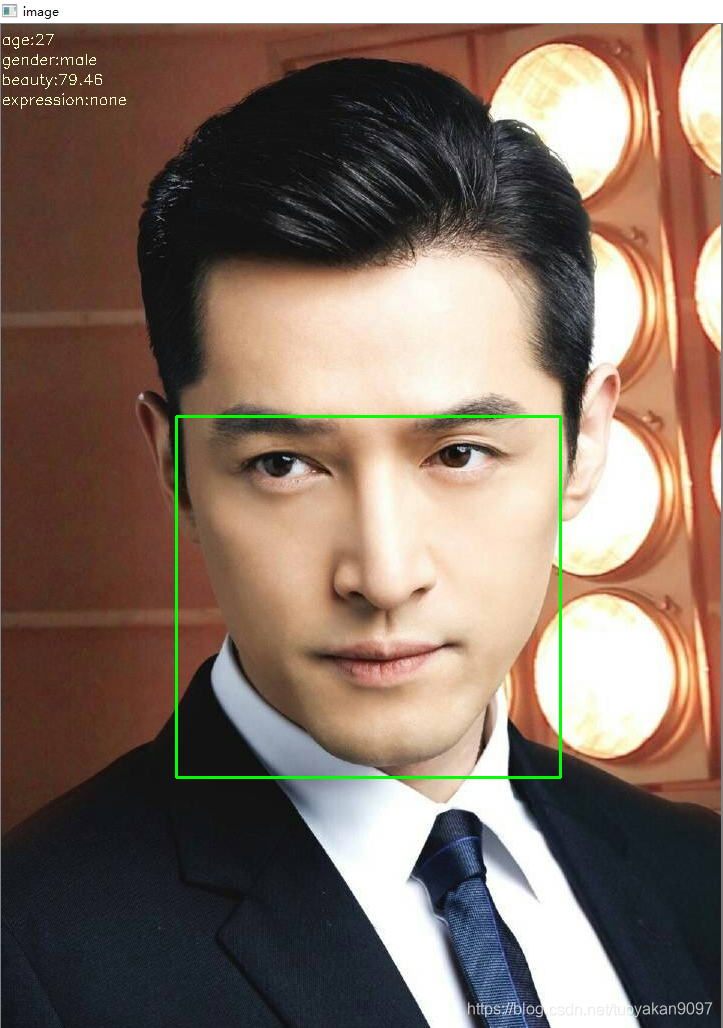
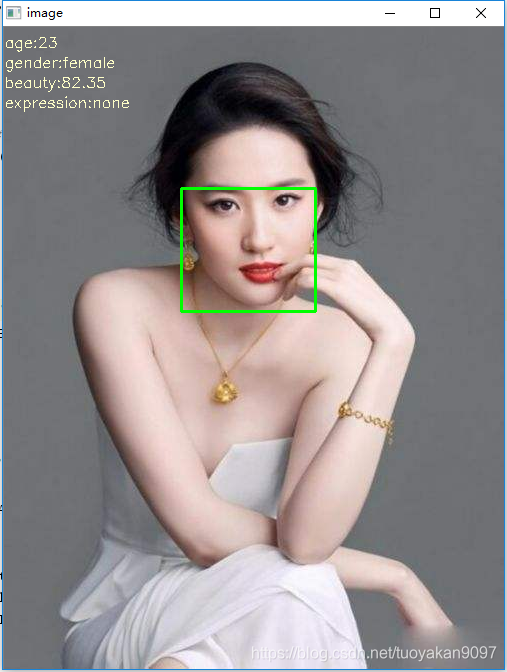
6.实现的完整源代码
下面我附上实现这些功能的完整代码:
#coding:utf-8
import urllib,urllib2, sys
import ssl
import json
import base64
import cv2
global token
def getToken():
global token
# client_id 为官网获取的AK, client_secret 为官网获取的SK
host = 'https://aip.baidubce.com/oauth/2.0/token?grant_type=client_credentials&client_id=你的API Key&client_secret=你的Secret Key'
request = urllib2.Request(host)
request.add_header('Content-Type', 'application/json; charset=UTF-8')
response = urllib2.urlopen(request)
content = response.read()
if (content):
token=json.loads(content)['access_token']
def faceDetect(imgBase64):
'''
人脸检测与属性分析
'''
request_url = "https://aip.baidubce.com/rest/2.0/face/v3/detect"
request_url = request_url + "?access_token=" + token
request = urllib2.Request(request_url)
request.add_header('Content-Type', 'application/json')
data = {"image": imgBase64, "image_type": "BASE64","face_field":"age,beauty,expression,face_shape,gender"}
response = urllib2.urlopen(request, urllib.urlencode(data))
content = response.read()
if content:
return content
def imgToBase64(imgPath):
with open(imgPath, "rb") as f: # 转为二进制格式
base64_data = base64.b64encode(f.read()) # 使用base64进行加密
return base64_data
if __name__=="__main__":
getToken()
imgPath=r"C:\Users\lee\Pictures\lena.jpg"
result=json.loads(faceDetect(imgToBase64(imgPath)))['result']
face_list=result['face_list'][0]
location=face_list['location']
age=face_list['age']
beauty=face_list['beauty']
expression=face_list['expression']['type']
gender=face_list['gender']['type']
img = cv2.imread(imgPath, cv2.IMREAD_COLOR)
leftTopX=int(location['left'])
leftTopY=int(location['top'])
rightBottomX=int(leftTopX+int(location['width']))
rightBottomY = int(leftTopY + int(location['height']))
cv2.rectangle(img, (leftTopX, leftTopY), (rightBottomX, rightBottomY), (0, 255, 0), 2)
font = cv2.FONT_HERSHEY_SIMPLEX
# 第一个坐标表示起始位置
cv2.putText(img,"age:"+str(age),(0, 20),font, 0.5, (200, 255, 255), 1)
cv2.putText(img, "gender:" + gender.encode("utf-8"), (0, 40), font, 0.5, (200, 255, 255), 1)
cv2.putText(img, "beauty:" + str(beauty), (0, 60), font, 0.5, (200, 255, 255), 1)
cv2.putText(img, "expression:" + str(expression), (0, 80), font, 0.5, (200, 255, 255), 1)
cv2.imshow('image', img)
cv2.waitKey(0)
print("end")





【推荐】国内首个AI IDE,深度理解中文开发场景,立即下载体验Trae
【推荐】编程新体验,更懂你的AI,立即体验豆包MarsCode编程助手
【推荐】抖音旗下AI助手豆包,你的智能百科全书,全免费不限次数
【推荐】轻量又高性能的 SSH 工具 IShell:AI 加持,快人一步
· DeepSeek 开源周回顾「GitHub 热点速览」
· 物流快递公司核心技术能力-地址解析分单基础技术分享
· .NET 10首个预览版发布:重大改进与新特性概览!
· AI与.NET技术实操系列(二):开始使用ML.NET
· 单线程的Redis速度为什么快?